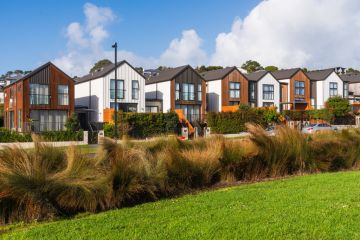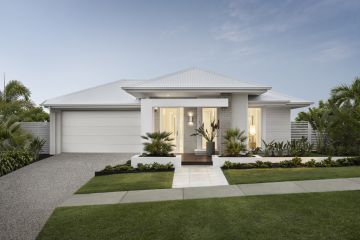These are the latest sustainability trends in apartment design
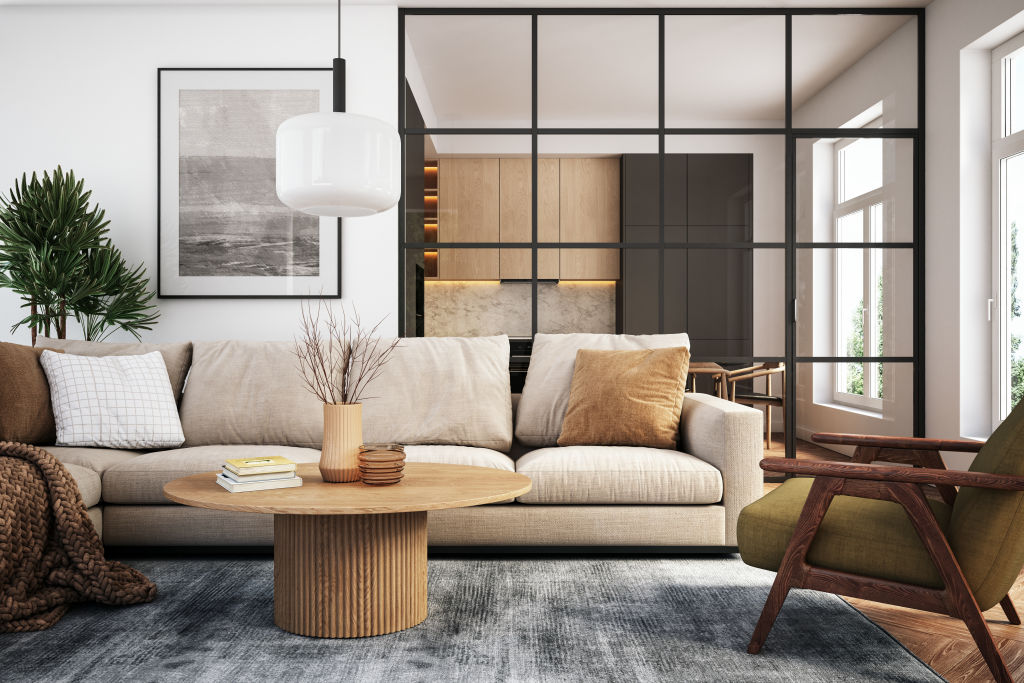
As house prices rise and we look for ways to minimise our footprint, apartment living is gaining huge popularity.
“We’re seeing empty-nesters embrace it, and unusually, young families too,” says designer Sonia Simpfendorfer. “Being contained makes it a selective way to live that’s more environmental.”
It does, however, present environmental challenges. We asked industry insiders how sustainability will inform apartment living in 2022.
The key to a sustainable apartment is thermal mass; its material’s ability to absorb, store, and distribute heat. “Heating and cooling account for over 40 per cent of our electrical usage,” says architect and certified passive house designer Seamus Ryan.
“Designing a thermally efficient space optimised to its site is crucial to reducing energy usage and carbon footprint.”
Ryan says almost half of the home’s heating energy is lost through windows, making their thermal performance-critical.
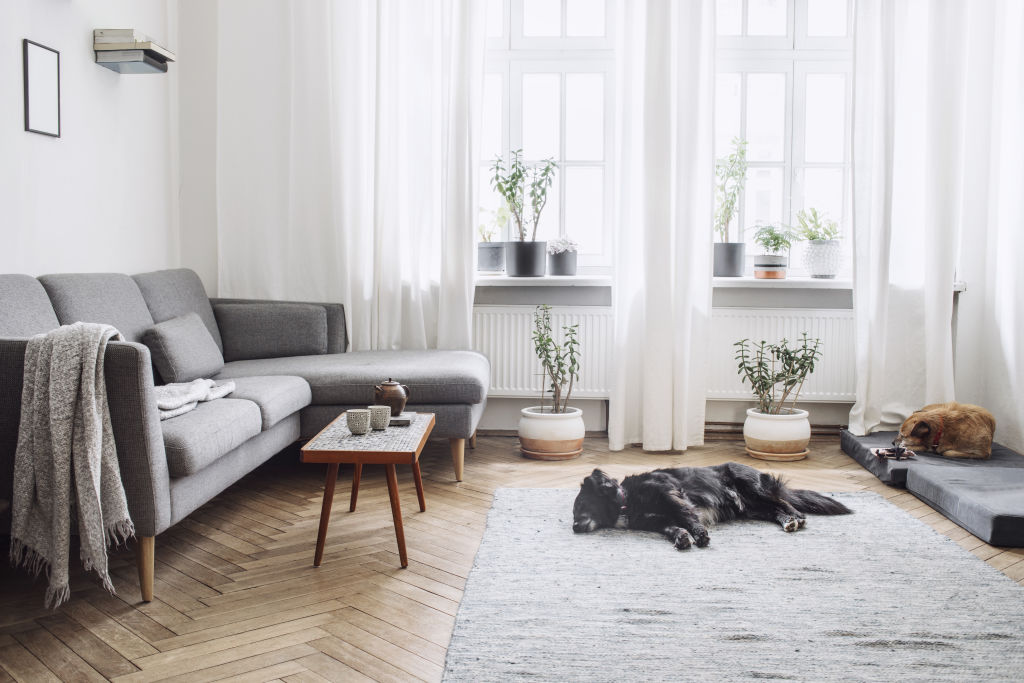
“There’s a huge range of windows and glazing now, and frame, glass type, thickness and glazing all affect performance,” he says. “When purchasing windows, ask for the ‘u value’ rating (the combined rating for glass and frame). The lower u valve, the better its performance.”
Harnessing natural light and cross ventilation play to the principles of passive climate control. Integrating insulation and double-glazing keeps heat inside in winter and outside in summer.
“It makes home energy-efficient, which reduces or eliminates the need for electrical temperature control,” says Simpfendorfer.
Active systems are however required in some instances.
“Passive heating and cooling can be hard to achieve if you are unable to change doors and windows to harness the orientation more effectively,” she says.
For her East Melbourne project, Simpfendorfer upgraded the original system.
“The ducted reverse-cycle was undersized and inefficient for the size of spaces it needed to service, so it worked harder, which meant more energy,” she says.
“We introduced physical barriers, like steel-framed glazing, between spaces so they could be heated and cooled independently. Ceiling fans were installed for added circulation and comfort.”
Smart window treatments, like Alexa and Google Home, optimise energy efficiency, security, and temperature control. With the ability to self-adjust based on the time of day and your needs, your apartment can automatically block out the sun in the summer and let it in during winter, providing effortless climate control all year round.
Smart lighting systems are also popular for customising and controlling lighting remotely. Some systems use energy when on standby, so research the standby power usage when purchasing.
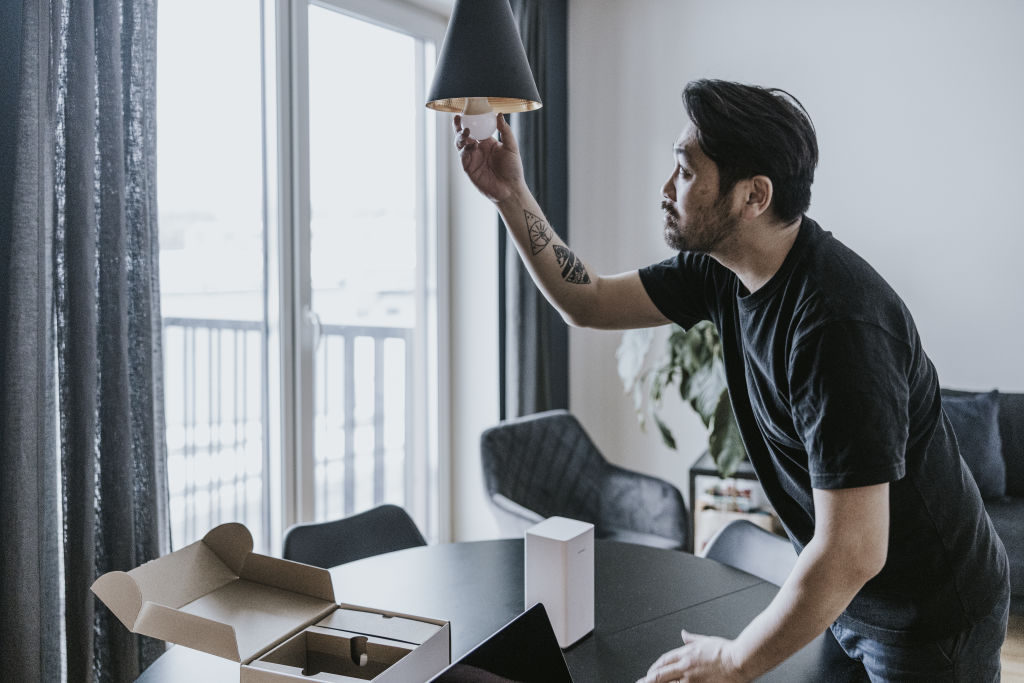
“Swap to low energy light fittings too,” says Simpfendorfer. “I use table and floor lamps rather than overheads for light where it’s needed.” Replace regular bulbs with mercury-free LED that produces light with the least electricity, saving energy and costs.
Love the crackle, smell and hypnotic flames of a wood-burning fireplace? “Clean air and wood smoke don’t go together,” warns Simpfendorfer, who installed a chic gas pot belly in her project. “Gas is more efficient and doesn’t pollute the air.”
The less you build, the fewer materials you use and, in 2022, designers are taking a sharper look at materials, opting for natural and non-toxic finishes. This includes paint containing VOCs (volatile organic compounds), a significant source of indoor air pollution that releases carbon-based gases as it dries and even years later.
“Look for natural paints made from renewable resources and brass tapware, a less toxic option than chrome,” suggests Simpfendorfer.
Upcycling continues to trend, with designers and DIYers exploring how they can reuse materials. “Loose furniture has real flexibility,” says Simpfendorfer. “When you pay for quality, it lasts. I have furniture from 15 years ago that I’ve reupholstered.
Reusing what we have is a big part of sustainability,” When buying, check if it’s made from carbon-neutral materials and is disposable or recyclable. “Look for second-hand items, too,” suggests designer Lisa Quinn-Schofield. “Some of my favourite pieces were found on the side of the road, recovered and restored.”
If gardening traditions have been about cultivating nature, now it’s about celebrating it. Plants are used to enhance interior spaces as much as for their sustainability benefits. Seizing carbon and absorbing pollutants and particles in the air, greenery improves air quality and reduces our carbon footprint.
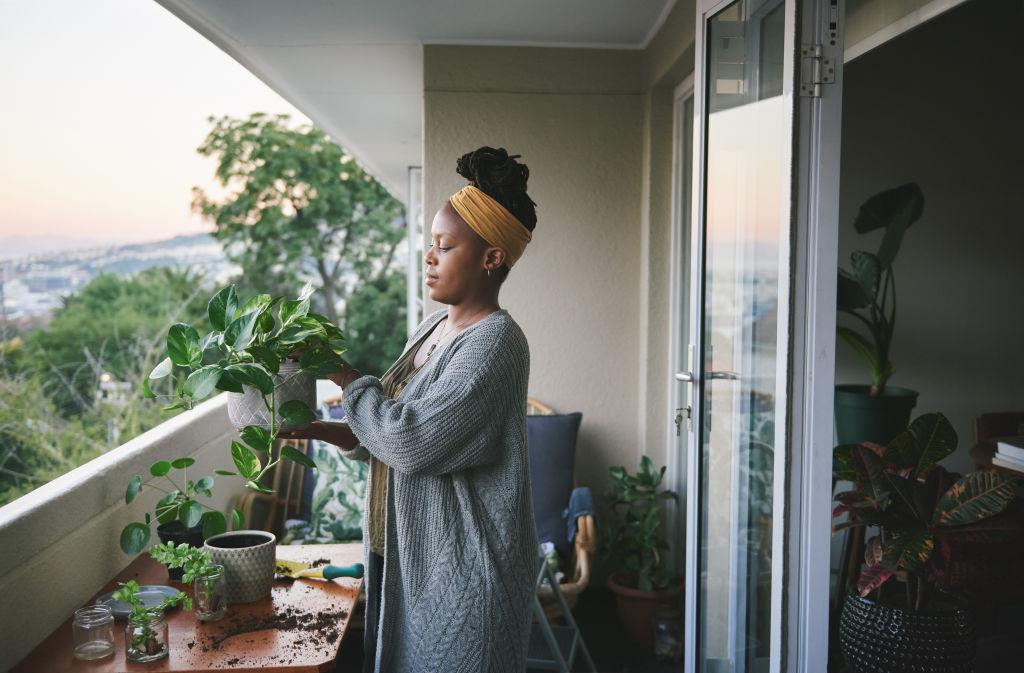
Chill your apartment sustainably, clustering potted plants along walls to create a cooling microclimate. Urban agriculture gardens on rooftops and balconies are popular, and turf roofs have a long tradition in high rises.
Designer Ceri Wagnell warns against being tempted by the convenience of artificial grass.
“It generates heat, which has the opposite effect of what plants do. Plants are cooling and environmental,” she says.
Hanging gardens have been around for centuries, and living walls covered in foliage are popular for colonising apartment walls. “Use an inbuilt reticulation system and add framework for climbers like scented star jasmine,” says Wagnell.
Succulents and citrus trees remain popular in 2022. Cluster succulent bowls or plant a lemon tree or dwarf citrus in a huge pot. “I use strawberries and basil as ground cover and an edible garden,” she says.
We thought you might like
States
Capital Cities
Capital Cities - Rentals
Popular Areas
Allhomes
More

